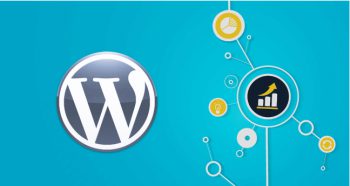Configuring WordPress for Maximum Performance
WordPress is popular because it allows people to build attractive websites with lots of functionality even if they’re not experienced web developers. It’s so robust and flexible that even professionals rely on it.
But it doesn’t take long for a WordPress site to start slowing down. This translates to fewer page views, lower conversion rates, and poor SEO since Google favors fast websites.
There are quite a few things you can do to maximize your WordPress site’s performance.
Rethink Your Theme
Some WordPress themes are optimized for speed and some don’t even come close. Switching to another, faster theme is a hassle but it will improve your site’s performance considerably if you have one of the beautiful, but slow loading ones.
Plugins
One of WordPress’s biggest draws is all the available plugins. One of WordPress’s biggest problems? All the available plugins.
Pro tip: When you upgrade to the latest version of WordPress and your site crashes, it’s most likely because your plugins aren’t compatible with the new version. Wait a few days after a release to upgrade until updated plugins become available. Your site being down for days is most definitely a performance problem.
More often, your plugins will work as expected, but they slow down page load times. That’s because the user’s web browser has to load each plugin separately from the rest of the page. Wherever possible, replace plugins with HTML. In many cases, this requires only basic coding skills. If you must stick with a plugin, make sure that you’re using the fastest one available.
Install a Cache Plugin
A caching plugin such as WP Super Cache will create a copy of each page so that it doesn’t have to recreate it each time that page is accessed by a user. This can increase speed by 2x-5x. If you have a managed WordPress hosting provider, this is already being done for you.
Optimize Your Images
Whether you use stock photos or snapshots from your phone, those pictures are much larger than you need them to be. When a page on your WordPress site loads, each picture has to be resized down so that it will fit into the appropriate space. Edit the photos down to the right size before adding them to your site, and your pages will load more quickly.
Update
Your plugins, WordPress theme, and WordPress itself get updated periodically. Using outdated versions will slow down your site and expose you to security threats. You need to install updates as they become available to keep your site from slowing down. If a WordPress update addresses security issues, you shouldn’t wait for new versions of your plugins. In that case, install the update and disable any plugins that stop working.
Don’t Host Your Own Videos
Uploading a video directly to WordPress takes up a lot of memory and bandwidth. If you use too much bandwidth, your web host may take down your site. Instead, upload your videos to a video hosting service like Vimeo or YouTube and then embed the video on your page.
Monitor Your Improvements
Test your website’s speed with a free online tool such as Dotcom-Monitor’s Web Page Speed Test both before and after you make changes so you can measure the impact of your modifications.



